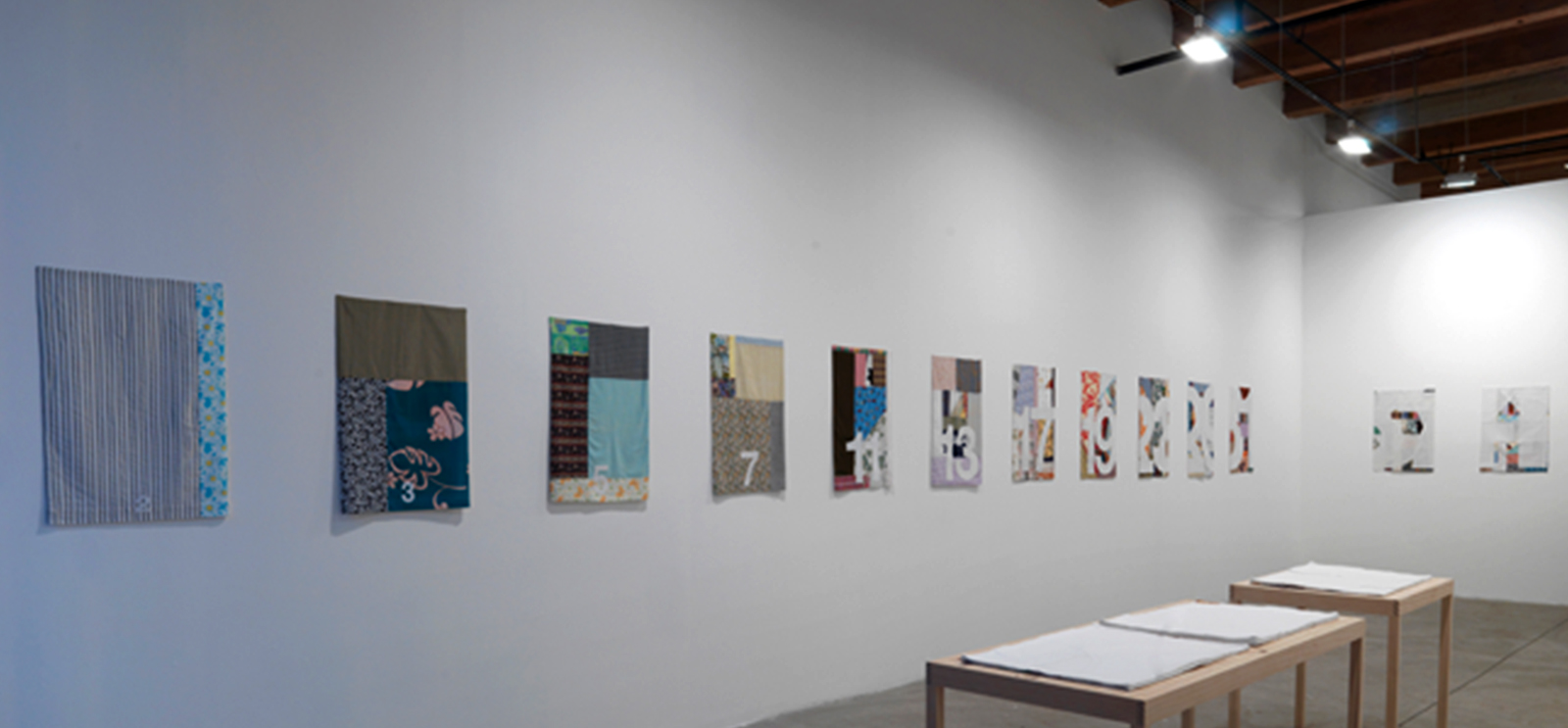
Growing up on a farm in central Kansas, Karen Reimer learned embroidery from her mother. But it wasn’t until teaching a fiber-arts class at Kansas’s Bethel College, her alma mater, that the craft became a basis for her art.
The college’s art department was small, so “you have to teach everything,” says Reimer, MFA’89, who taught there from 1996 to ’98. While her students were embroidering, she did the same, copying book pages and scraps of paper. She enjoyed the slow work, the repeated actions, although, she says, “I was trying to do it in a slightly absurdist way. It’s this huge amount of work going into reproducing something that could be reproduced on a Xerox machine, and then on top of that would be a whole lot more readable if you had done it that way.”
The works that followed, embroidered copies of pieces of trash—a gum wrapper, a torn receipt, the solution to a New York Times crossword (see this issue’s cover)—gave the commonplace items new meaning. Her reproduction of a used sweetener package (Equal, 1999) makes a viewer stop and consider the word “equal” differently than when it’s trash. “Once you move it to the art world,” she says, a viewer can ask if the copy is literally equal to the original or, if reflecting the craft involved, the translation gains value.
Solution to Last Week’s Puzzle (1999) was part of a series of newspaper pieces. Again it prompts viewers to consider which is the original and which is the copy. The original, ripped from a week-old newspaper, is garbage, while the copy took an estimated 40 hours of work and gives new meaning to the words—at least those that are readable. “There’s something lost as well as gained,” she notes. “If I add value, I also lose legibility” when embroidering the tiny letters.
Reimer, the publications director and registrar at the Renaissance Society, the contemporary-art museum based in Cobb Hall, considers her work a combination of craft and conceptual art. “Conceptual art tried to get rid of the object,” she says, “and I tried to put it into the most material form I could.” She was “blown away,” she says, by sociologist Richard Sennett’s (AB’64) 2008 book The Craftsman, in which he laments that the industrialized world no longer values skilled craftspeople. “It’s great to have somebody talking about being able to know things by doing them.” (See “Life in Practice” for more on Sennett.)
In recent work, Reimer has connected her art even more closely with the practice of craft, embroidering pillowcases—one place, she says, where people might still find embroidery in their homes. “My mom or grandma would have a lot of dresser scarves or tea towels—things we just don’t use anymore.”
In 2007 she began a series of piecework pillowcases, Endless Set, each appliqued with a prime number that indicates how many pieces of fabric were used to make the pillowcase (so #2 is made of two scraps, #37 with 37). In addition, the number on each pillowcase matches its height in inches. As the numbers get too big for the pillowcase’s standard-sized dimensions, Reimer folds and layers the excess fabric, so the pillowcases become thicker and the ever-smaller fabric scraps, as well as the numbers themselves, become more obscured.
“I’m in the early hundreds,” Reimer says. Now that the numbers are so high and the pillowcases an inch thick in some spots, she’s enlisted an architect friend to help come up with sewing patterns. “I plan to continue the series,” she says in her artist’s statement, “until I am no longer physically able to make the pillowcases according to this system.” She assumes that will happen when she needs so many scraps for a pillowcase that they are too small to sew. The series, she says, is “a contest between the concept of infinity and the limitations of the physical world.”
Another pillowcase project, for her next exhibition at Chicago’s Monique Meloche Gallery November 19–December 31, plays with words. Rather than embroidering roses or daisies, as her mother might have, she stitches onto the pillowcases quotations containing the words “flowers,” “flowering,” or “floral.” Some of the quotes come from the arts and crafts movement, addressing labor and its enjoyment.
For Reimer, embroidery evokes something people like her mother did to surround themselves with beautiful things. “The notion of decorating, that you would put work just into making your house look good—there’s no use for that. You’re not knitting a sweater; you’re not quilting a quilt. Embroidery is pure decoration,” she says. “It’s just work.”
